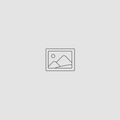Jul 26, 2021
How to Tune a Ukulele for Beginners | Easy Step-by-Step Guide
How to Tune a Ukulele for Beginners: A Complete Guide
Learning to play a stringed instrument like the ukulele is a fun and rewarding way to connect with music. Whether you're preparing for performances or just strumming around the house, tuning your ukulele is the very first—and most important—step.
You can't play chords correctly or enjoy your favorite songs if you're out of tune. In this guide, we’ll walk you through everything you need to know about tuning your uke, including how to use a clip-on tuner, tune by ear, and explore alternate tunings like Low G.
Let’s get started!
🎯 Understanding Ukulele Tuning Basics
Tuning a ukulele might seem tricky at first—especially if you're coming from guitar, violin, or another stringed instrument where strings are arranged in strictly ascending or descending pitch.
Here’s the standard tuning for most soprano, concert, and tenor ukuleles (known as GCEA tuning):
-
G (4th string – top string, closest to your face)
-
C (3rd string)
-
E (2nd string)
-
A (1st string – bottom string, closest to the floor)
Here’s the twist: The G string is often tuned higher than the C string, giving the ukulele its signature bright and cheerful tone. This reentrant tuning is different from most instruments and might take some getting used to—but don’t worry, it’s easy once you try it.
🎵 Using a Ukulele Tuner
The easiest way to tune your ukulele is with a clip-on tuner designed for stringed instruments. If you don’t have one, you can also download a tuning app for your smartphone.
Here’s how to do it:
-
Clip the tuner to your headstock.
-
Play the G string (top string). Your tuner will indicate the pitch.
-
Turn the tuning peg until the tuner displays “G.”
-
Repeat for the C, E, and A strings.
✅ Tip: The high G string is usually an octave above middle G. If you're switching to Low G tuning, you’ll need to replace that string. We offer Low G string installation at Island Bazaar Ukuleles—a great option if you want a warmer or jazzier sound.
🔄 What’s an Octave?
An octave is the distance between one note and the next instance of that same note higher or lower on the scale. For example, the open G string and the note at the 12th fret of the same string are both G—but one is an octave higher.
This concept is useful to understand, especially if you’re experimenting with Low G tuning, which replaces the reentrant high G with a deeper, more linear pitch progression.
🎼 How to Tune Without a Tuner
No tuner? No problem! You can still tune by ear using this method:
-
Start with the G string (tune it to any note you choose or reference a piano or app).
-
Fret the G string at the 5th fret—that’s a C. Tune the next string (C) to match this pitch one octave lower.
-
Fret the C string at the 4th fret—this gives you an E. Tune your E string to match it.
-
Fret the E string at the 5th fret—this gives you an A. Tune your A string to match.
This method takes good ear training and practice, but it helps build your musical skills and understanding of the fretboard.
📈 What If It Still Sounds Off?
Even experienced players struggle with pitch perception from time to time. If you're not sure whether a note is flat or sharp, don't stress—your ears will improve over time.
Keep in mind:
-
New strings stretch—re-tune frequently!
-
Room temperature and humidity affect tuning.
-
Take your time and double-check each string.
🎶 Start Learning Songs!
Once your ukulele is in tune, you’re ready to start learning songs and expanding your chord knowledge. If you're just getting started, Island Bazaar offers private and group ukulele lessons in Huntington Beach—perfect for beginners and players ready to advance.
🌺 Final Thoughts
Tuning your ukulele is a small step with a big impact. Whether you're using a digital tuner or training your ear the old-school way, staying in tune makes everything sound better—and keeps your learning on track.
So grab your uke, check your tuning, and get ready to make music!


